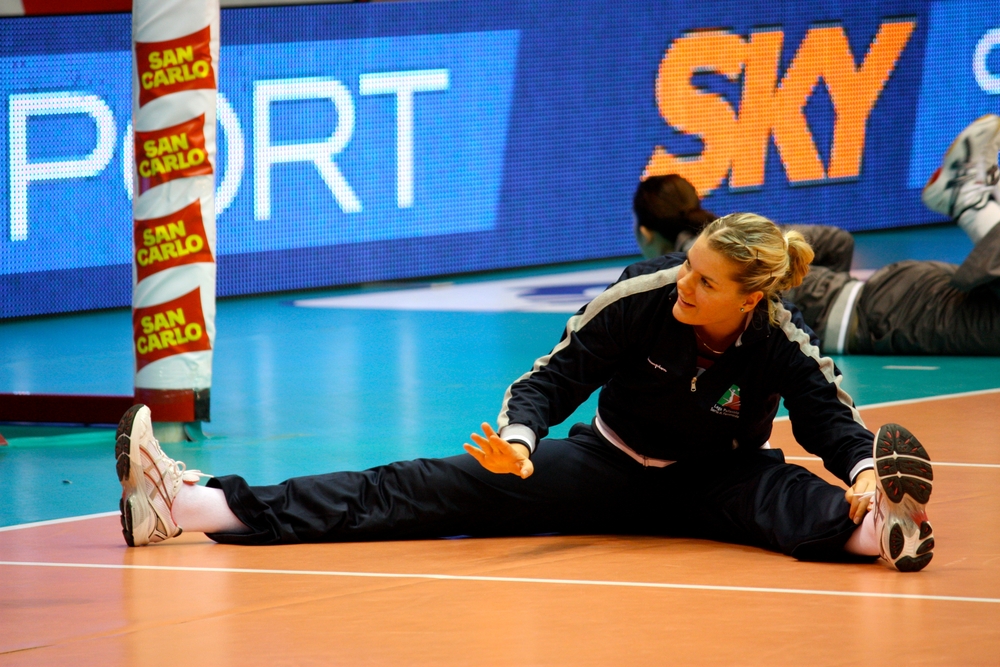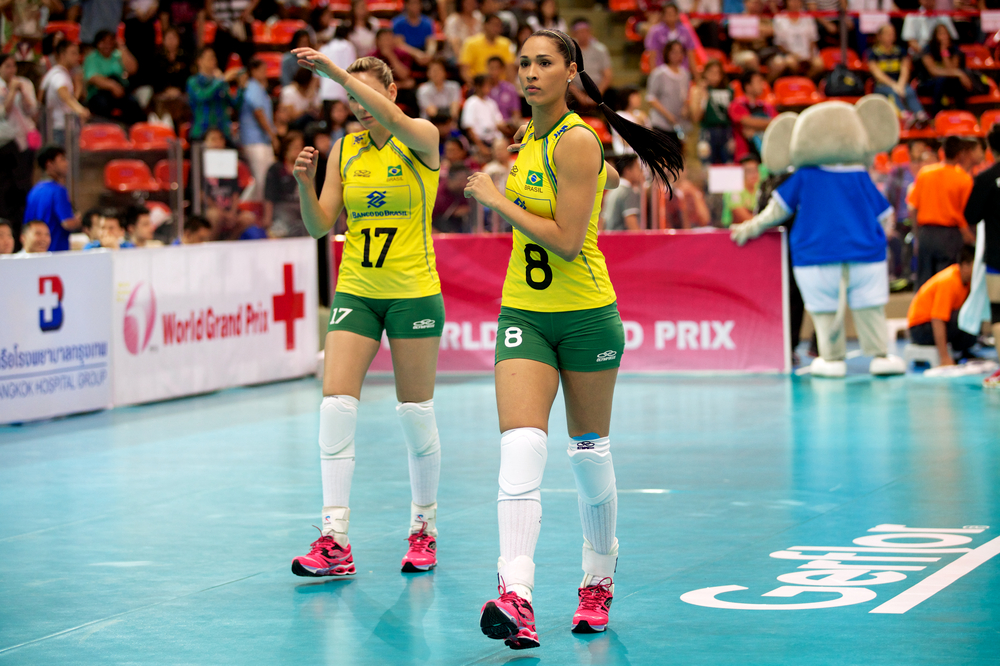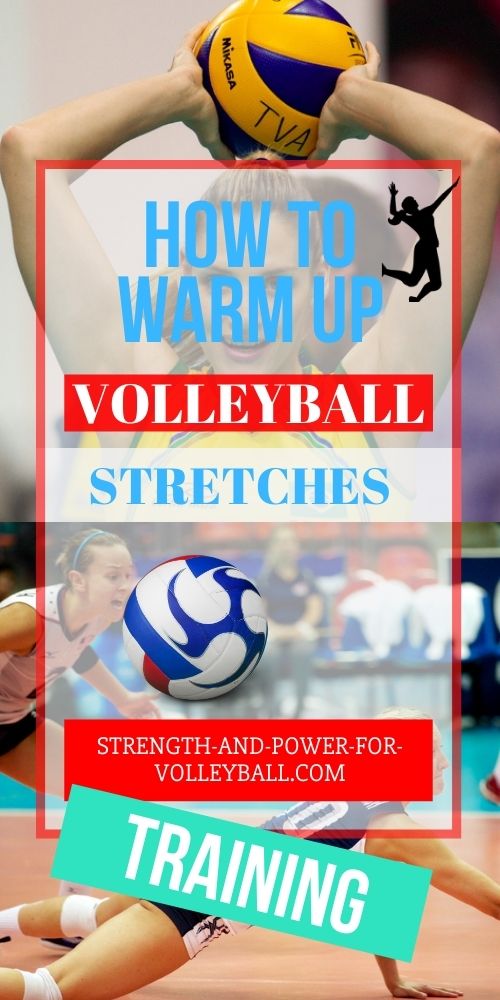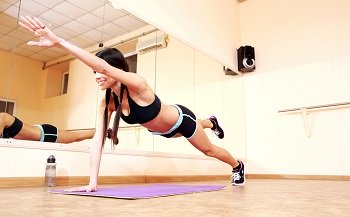- Home
- workout for volleyball
- flexibility for volleyball
Training Flexibility for Volleyball
Dynamic Stretching Warm Ups
How to train flexibility for volleyball. Like most sports, strength, speed, and endurance are important qualities for volleyball.
Flexibility determines how proficiently and efficiently an athlete can apply them.
Flexibility is often highly neglected when training for sports.
And where flexibility is put into practice, coaches often don't have any reason for it. This is a mistake.
Just like when designing strength training for volleyball, your goals for flexibility training should be clearly defined.
PNF Stretching Prior to Lifting Heavy Weights
Proprioceptive Neuromuscular Facilitation (PNF) is very similar to dynamic flexibility exercises in that you are relaxing and contracting your muscles through greater ranges of motion.
PNF stretching is usually performed with a partner and involves both passive and active muscle actions. PNF stretching involves a neuromuscular relationship of opposing muscle groups called reciprocal inhibition.
Reciprocal inhibition is basically one muscle group contracting while the opposing muscle group relaxes.
For example, when performing a PNF hamstring stretch, you fire your quadriceps muscle which relaxes your hamstrings. You then have a partner that assists you in stretching your hamstrings.
If you enjoyed these tips and would like to keep it close to you at any time, just save this pin to your Pinterest Volleyball Training Board.
What Types of Stretches are Best for Athletes
It seems many coaches have flexibility for volleyball as part of their training because they've heard flexibility helps prevent injuries. Although this is true, improper flexibility training can also lead to injury.
It is important to know the different kinds of flexibility training and what is appropriate and when, when training for volleyball.
Dynamic Stretching Warm Ups for Volleyball
Improper flexibility training can lead to injury
Improper flexibility training at the torso can lead to injury. Performing exercises such as the scorpion can increase unwanted flexibility at your body's core.
The main function of the body's core is to stabilize. If you have a harder time stabilizing because you have to prevent this unwanted movement, not only will your sports performance decline because of the inefficiency of movement, but it is also more likely for injury to occur.
This can be especially dangerous if you are loading heavy weight on your spine (for example, peforming a back squat) and you have to stabilize and prevent movement into this unwanted range of motion.
Also, the timing of stretching is important
Many coaches advocate static stretching before volleyball practice. This may be the worst time to static stretch.
Static stretching lengthens your muscles into an increased range of motion. The result is relaxed muscles. You are basically putting your muscles to sleep right before you start your practice.
This isnt good because during practice we want to make quick explosive movements. Our muscles need to be awake and ready for these quick movements.
Knowing what different types of stretches to put into volleyball practice is important.
There are three types of stretches...
- Static stretches
- Dynamic stretches
- Ballistic stretches
Static Stretching

A static stretch is performed slow and constant, with the end position held for about 30 seconds.
Static stretching is easy to learn and is affective in increasing a joints range of motion. As long as proper technique is used, static stretching can be an easy way to increase flexibility for volleyball.
To improve static flexibility, it is best to perform static stretches after using a foam roller, a device used to release muscle tension.
The foam roller is one of the cheapest and most effective self message tools you'll find for releasing tension. The biggest benefit of foam rolling is it will help you stay healthy and improve the efficiency of your strength training workouts.
Foam rolling improves the efficiency of your training because it improves the quality of your muscles tissue which then also helps with proper muscle firing patterns.
The benefits of stretching are greater when the temperature of the joint is warmer than at rest. Therefore, the best time to static stretch for increased flexibility for volleyball maybe at the end of a workout.
However, by performing static stretches at the end of a workout, you may just be bringing the muscle length back to it's original resting length, not taking it to a greater range of motion, not increasing flexibility.
So it may be best to foam roll then static stretch at the beginning of a workout, then follow with a dynamic warm up.
Static stretching can also be effective on off days to increase flexibility and enhance recovery from the previous volleyball workout.
Ballistic stretching
Ballistic stretching is a stretching technique that involves a bouncing type movement. Ballistic stretching is not usually a recommended stretching technique because there is a greater chance of muscle or connective tissue injury.
When performing ballistic stretches, you are basically using your body's momentum to go through greater ranges of motion. These movements dont let the muscle relax which defeats the purpose of stretching.
This type of stretching isn't considered useful and you are more likely to injure muscles especially where there has been a previous injury.
Dynamic stretching

Dynamic stretching is basically activating your muscles through movement.
Dynamic stretching is similar to ballistic stretching in that it involves speed of movement, but dynamic stretches avoid bouncing and the focus is mainly on increasing strength and flexibility through movement training.
Dynamic flexibility exercises such as hand-walks and forward lunges improve the long-term mobility and flexibility of your muscles.
Volleyball teams often use dynamic flexibility exercises often as a sport specific warm up for matches.
Performing dynamic flexibility exercises is about the most time efficient type of training you can do. In just 5 to 10 minutes a day you can enhance your strength, flexibility stability, and mobility - key variables of volleyball conditioning.

